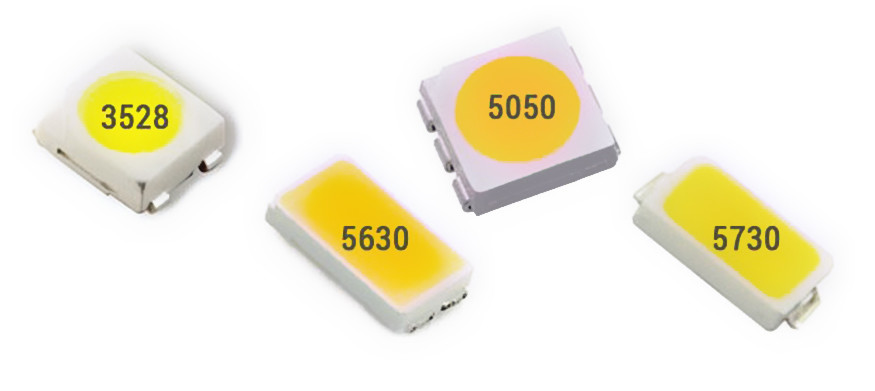The Difference Between LED and OLED
Today, the LED market has been saturated, the price war has intensified, and profit margins have been continuously compressed. In this context, OLED was born at the right time, providing broad prospects for the majority of businesses to open up new markets. So what is the difference between OLED and LED, and what is their light-emitting principle? Let’s discuss it together below:
LED uses metal materials, while OLED uses organic materials, the light-emitting principle of the two is the same. The difference is that OLED does not need a backlight, it emits light by itself, and is composed of a light-emitting diode array. The brightness is higher than that of LED liquid crystal, and the thickness is thinner. It is a substitute for LED liquid crystal screen in the future. The LED LCD screen needs a backlight source, the brightness is average, and the display degree is low in sunlight, but it is currently the most widely used.
LED applications can be divided into two categories: one is LED single tube application, including backlight LED, infrared LED, etc., and the other is LED display. At present, the technology of LED basic material manufacturing is uneven in the world, but as far as LED display is concerned, the level of design and production technology in China is in a leading position in the world.
The LED display screen is a display device composed of light-emitting diodes arranged in an array. It adopts low-voltage scanning drive, which has the characteristics of low power consumption, long service life, low cost, high brightness, few failures, large viewing angle and long visual distance.
OLED stands for organic light emitting display. It is a newly emerging category in mobile phone LCD, known as the “dream display.” OLED display technology is different from traditional LCD display methods. It does not require a backlight, and uses very thin organic material coatings and glass substrates or special plastic substrates. When an electric current is passed through, these organic materials will emit light. Moreover, the OLED display screen can be made lighter and thinner, with a larger viewing angle, and can significantly save power. However, although OLEDs with better technology will replace LCDs such as TFTs in the future, organic light-emitting display technology still has shortcomings such as short service life and difficulty in large-scale screens.
OLED: Also known as organic EL display, it is an organic light-emitting diode (Organic Light-Emitting Diode).
The basic structure of OLED is a thin, transparent, semiconductor-like indium tin oxide (ITO), connected to the positive electrode of electricity, plus another metal cathode, wrapped in a sandwich structure. The entire structure layer includes the hole transport layer (HTL), the light emitting layer (EL) and the electron transport layer (ETL).
When the power is supplied to an appropriate voltage, the positive electrode holes and the negative electrode charges will be combined in the light-emitting layer to produce light. The three primary colors of red, green and blue are produced according to their different formulations, which constitute the basic colors.
The characteristic of OLED is that it emits light by itself, unlike TFT LCD which needs a backlight, so its visibility and brightness are high. Secondly, low voltage demand and high power saving efficiency, coupled with fast response, light weight, thin thickness, simple structure and low cost, are regarded as one of the most promising products in the 21st century.
The light-emitting principle of organic light-emitting diodes is similar to that of inorganic light-emitting diodes. When the device is forward biased by direct current (DC), the applied voltage energy will drive electrons (Electron) and holes (Hole) into the device from the cathode and anode respectively, when the two meet in conduction , Combine, form the so-called electron-hole recombination (Electron-Hole Capture).
When a chemical molecule is excited by external energy, if the electron spin (Electron Spin) and the ground state electron are paired, it is a singlet state (Singlet), and the light released is the so-called fluorescence (Fluorescence). Conversely, if the spins of the excited state electrons and the ground state electrons are not paired and parallel, it is called a triplet state, and the light emitted is so-called phosphorescence.
When the state position of an electron changes from an excited high energy level to a steady low energy level, its energy will be released in the form of photons (Light Emission) or heat (Heat Dissipation) respectively. The photon part can be used as a display function. However, the triplet phosphorescence of organic fluorescent materials cannot be observed at room temperature, so the theoretical limit value of the luminous efficiency of PM-OLED devices is only 25%.
The principle of PM-OLED light emission is to use the energy level difference of the materials to convert the released energy into photons, so we can choose appropriate materials as the light-emitting layer or dope dyes in the light-emitting layer to obtain the desired color of light. In addition, in general, the combination reaction of electrons and holes is within tens of nanoseconds (ns), so the response speed of PM-OLED is very fast.
P.S.: Typical structure of PM-OLED.
A typical PM-OLED is composed of a glass substrate, an ITO (indium tin oxide) anode (Anode), an organic light-emitting layer (Emitting Material Layer), and a cathode (Cathode). Among them, the thin and transparent ITO anode and the metal cathode sandwich the organic light-emitting layer like a sandwich. When the holes (Hole) injected into the anode and the electrons (Electron) from the cathode combine in the organic light-emitting layer, the organic material is excited to emit light.
However, the current multi-layer PM-OLED structure with better luminous efficiency and commonly used, in addition to the glass substrate, cathode and anode electrodes, and organic light-emitting layer, it is still necessary to make a hole injection layer (HIL) and a hole transport layer ( Hole Transport Layer; HTL), Electron Transport Layer (ETL) and Electron Inject Layer (EIL) and other structures. In addition, an insulating layer needs to be provided between each transmission layer and the electrode. Therefore, the difficulty of thermal evaporation (Evaporate) processing is relatively increased, and the manufacturing process becomes complicated.
Since organic materials and metals are very sensitive to oxygen and moisture, they need to be packaged and protected after production. Although PM-OLED needs to be composed of several layers of organic film, the thickness of the organic film layer is only about 1,000-1,500A° (0.10-0.15 um), and the total thickness of the entire display panel (Panel) after encapsulation and desiccant (Desiccant) is less than 200um (2mm), has the advantage of being thin and light.
The Structure and Working Principle of OLED
1. OLED Structure
OLED consists of the following parts:
Base layer-The base layer is used to support the entire OLED.
Anode-The anode eliminates electrons when current flows through the device.
Organic layer-The organic layer is composed of organic molecules or organic polymers.
Conductive layer-This layer is made of organic plastic molecules that transport “holes” from the anode. Polyaniline can be used as the conductive polymer of the OLED.
Emissive layer-This layer is made up of organic plastic molecules that transport electrons from the cathode; the light-emitting process is carried out in this layer. Polyfluorene can be used as the emission layer polymer.
Cathode-When there is current flowing in the device, the cathode injects electrons into the circuit.
2. OLED Manufacturing
The most important part of the OLED production process is to apply the organic layer to the base layer. There are three ways to accomplish this task:
1) Vacuum deposition or vacuum thermal evaporation
The organic molecules in the vacuum chamber will be slightly heated, and then these molecules will condense in the form of thin films on the lower temperature base layer. This method is very costly, but the efficiency is low.
2) Organic vapor deposition
In a low-pressure hot-wall reaction chamber, the carrier gas transports the evaporated organic molecules to the low-temperature base layer, and then the organic molecules condense into a thin film. The use of carrier gas can improve efficiency and reduce the cost of OLED.
3) Inkjet printing
Using inkjet technology, OLEDs can be sprayed onto the base layer, just as ink is sprayed onto paper during printing. Inkjet technology greatly reduces the production cost of OLEDs, and can also print OLEDs on films with very large surface areas to produce large displays, such as 80-inch large-screen TVs or electronic billboards.
3. The Light-emitting Process of OLED
The way that OLED emits light is similar to that of LED, and it needs to go through a process called electrophosphorescence.
The specific process is as follows:
1) The battery or power supply of the OLED device will apply a voltage across the OLED.
2) The current flows from the cathode to the anode and passes through the organic layer.
3) The cathode outputs electrons to the organic molecule emission layer.
4) The anode absorbs the electrons transmitted from the organic molecular conductive layer. (This can be regarded as the anode outputting holes to the conductive layer, and the two effects are equal.
5) At the junction of the emitting layer and the conductive layer, electrons will combine with holes.
6) When an electron encounters a hole, it will fill the hole.
7) When this process occurs, electrons will release energy in the form of photons.
8) OLED emits light.
9) The color of light depends on the type of organic molecules in the emission layer. Manufacturers will place several organic films on the same OLED to form a color display.
10) The brightness or intensity of the light depends on the magnitude of the applied current. The greater the current, the higher the brightness of the light.
4. Classification of OLED
The following are several kinds of OLED: passive matrix OLED, active matrix OLED, transparent OLED, top emitting OLED, foldable OLED, white OLED, etc.
Each type of OLED has its own unique purpose. Next, we will discuss these types of OLEDs one by one. The first is passive matrix and active matrix OLED.
Passive matrix OLED structure
PMOLED has a cathode belt, an organic layer, and an anode belt. The anode belt and the cathode belt are perpendicular to each other. The intersection of the cathode and the anode forms a pixel, that is, where the light is emitted. The external circuit applies current to the selected cathode strip and anode strip, thereby determining which pixels emit light and which do not emit light. In addition, the brightness of each pixel is proportional to the magnitude of the applied current.
PMOLED is easy to manufacture, but its power consumption is greater than other types of OLED, this is mainly because it requires external circuits. PMOLED is the most efficient when used to display text and icons, and is suitable for making small screens, such as those commonly seen on mobile phones, palmtop computers, and MP3 players. Even if there is an external circuit, the power consumption of passive matrix OLED is still less than the current LCD used in these devices.





